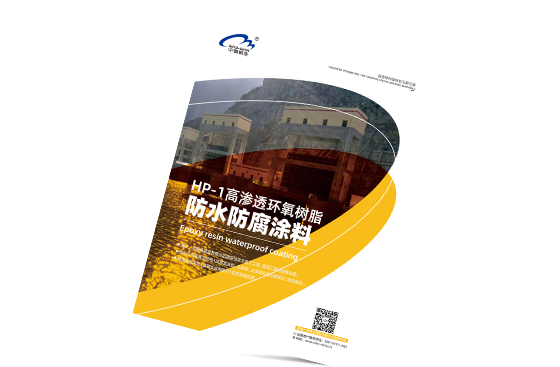Strength Redefined: The Science Behind Carbon Fiber Wrap for Concrete Projects
Release Time:
2024-10-12 09:20
Strength Redefined: The Science Behind Carbon Fiber Wrap for Concrete Projects
Table of Contents
1. Introduction to Carbon Fiber Wrap in Concrete
2. Understanding Concrete and Its Limitations
3. The Science of Carbon Fiber Wrap
3.1 What is Carbon Fiber?
3.2 Properties of Carbon Fiber
4. Benefits of Using Carbon Fiber Wrap for Concrete
4.1 Enhanced Structural Strength
4.2 Improved Durability and Longevity
4.3 Lightweight and Versatile Design
5. Applications of Carbon Fiber Wrap in Concrete Projects
5.1 Structural Reinforcement
5.2 Seismic Retrofitting
5.3 Infrastructure Repair
6. The Installation Process of Carbon Fiber Wrap
6.1 Surface Preparation
6.2 Application Techniques
6.3 Curing and Finishing
7. Case Studies: Successful Concrete Projects Using Carbon Fiber Wrap
8. Frequently Asked Questions (FAQs)
9. Conclusion
1. Introduction to Carbon Fiber Wrap in Concrete
In the world of construction and architecture, the quest for strength and durability is unending. Traditional concrete, while revered for its robustness, has limitations that can lead to structural failures over time. **Carbon fiber wrap** has emerged as a revolutionary solution, enhancing the performance of concrete structures in a variety of applications. This article delves into the science behind carbon fiber wrap technology and its transformative impact on concrete projects.
2. Understanding Concrete and Its Limitations
Concrete is one of the most widely used construction materials globally, known for its compressive strength. However, it is inherently weak in tension and can be susceptible to cracking, especially in seismic regions or areas exposed to harsh environmental conditions. Additionally, factors such as corrosion from environmental elements and aging can compromise its structural integrity.
To address these challenges, engineers and construction professionals have sought innovative materials that can reinforce and extend the lifespan of concrete structures.
3. The Science of Carbon Fiber Wrap
Understanding the fundamental properties of carbon fiber is crucial to appreciating its applications in concrete reinforcement.
3.1 What is Carbon Fiber?
**Carbon fiber** is a material consisting of thin strands of carbon atoms bonded together in a crystalline structure. This unique arrangement imparts exceptional strength and stiffness, making it an ideal candidate for reinforcing concrete.
3.2 Properties of Carbon Fiber
The key properties of carbon fiber that contribute to its effectiveness in concrete applications include:
- **High tensile strength**: Carbon fiber is five times stronger than steel, offering unparalleled reinforcement.
- **Lightweight**: Its low density allows for easy handling and application without adding significant weight to structures.
- **Corrosion resistance**: Unlike steel, carbon fiber does not corrode, providing long-lasting durability.
- **Flexibility**: The material can be molded to fit various forms, making it versatile for different applications.
4. Benefits of Using Carbon Fiber Wrap for Concrete
The advantages of incorporating carbon fiber wrap into concrete projects are numerous and significant.
4.1 Enhanced Structural Strength
Carbon fiber wrap increases the tensile strength of concrete, allowing structures to withstand greater loads and pressures. This enhancement is particularly crucial in buildings and bridges that bear heavy traffic or are subject to extreme weather conditions.
4.2 Improved Durability and Longevity
By protecting concrete from damage caused by environmental factors and internal stresses, carbon fiber wrap can significantly extend the lifespan of structures, reducing maintenance costs and the need for repairs.
4.3 Lightweight and Versatile Design
The lightweight nature of carbon fiber wrap means that it can be applied to existing structures without the need for extensive retrofitting. Its versatility allows it to be used in a variety of applications, from residential buildings to large-scale infrastructure projects.
5. Applications of Carbon Fiber Wrap in Concrete Projects
Carbon fiber wrap is employed in various applications, each showcasing its unique capabilities.
5.1 Structural Reinforcement
One of the primary uses of carbon fiber wrap is in the **reinforcement of structural elements** such as beams, columns, and slabs. It helps to enhance the load-bearing capacity and resistance to bending and shear stresses.
5.2 Seismic Retrofitting
In earthquake-prone areas, buildings must be capable of enduring seismic forces. Carbon fiber wrap is often used in **seismic retrofitting**, providing additional strength and flexibility to structures, thereby improving their performance during seismic events.
5.3 Infrastructure Repair
Transportation infrastructure, such as bridges and tunnels, requires regular maintenance and repair. Carbon fiber wrap is an effective solution for **repairing damaged concrete**, restoring structural integrity without the need for extensive reconstruction.
6. The Installation Process of Carbon Fiber Wrap
The installation of carbon fiber wrap involves several critical steps to ensure optimal performance and longevity.
6.1 Surface Preparation
Before applying carbon fiber wrap, the surface of the concrete must be thoroughly cleaned and prepared. This process may involve removing loose debris, dirt, and any existing coatings to ensure proper adhesion.
6.2 Application Techniques
Once the surface is prepared, the carbon fiber wrap is cut into appropriate sizes and applied using specialized epoxy resin. The application must be done carefully to avoid bubbles and ensure a smooth finish.
6.3 Curing and Finishing
After application, the carbon fiber wrap must cure for a specified period, allowing the resin to harden and bond securely with the concrete. Once cured, any excess material is trimmed, and a final protective layer may be applied to enhance durability.
7. Case Studies: Successful Concrete Projects Using Carbon Fiber Wrap
Numerous projects have successfully utilized carbon fiber wrap to enhance structural integrity. For instance, a major highway bridge retrofitted with carbon fiber wrap demonstrated improved load capacity and reduced maintenance costs. Another notable project involved the reinforcement of an aging parking garage, which extended its lifespan and ensured safety for users. These case studies highlight the effectiveness of carbon fiber wrap in real-world applications.
8. Frequently Asked Questions (FAQs)
8.1 What is the lifespan of carbon fiber wrap?
Carbon fiber wrap can last for several decades, significantly extending the lifespan of the concrete it reinforces.
8.2 How does carbon fiber wrap compare to traditional steel reinforcement?
While steel reinforcement is effective, carbon fiber wrap offers greater tensile strength, lighter weight, and resistance to corrosion, making it a superior option in many cases.
8.3 Can carbon fiber wrap be used on existing structures?
Yes, carbon fiber wrap can be applied to existing concrete structures without extensive modifications, making it an efficient solution for reinforcement.
8.4 Is the installation of carbon fiber wrap expensive?
While the initial cost may be higher than traditional methods, the long-term benefits and reduced maintenance expenses can make carbon fiber wrap a cost-effective choice.
8.5 What factors influence the effectiveness of carbon fiber wrap?
Factors such as the quality of the wrap, surface preparation, and application technique all significantly impact the overall effectiveness of carbon fiber reinforcement.
9. Conclusion
The application of carbon fiber wrap in concrete projects represents a significant advancement in construction technology. By enhancing the strength, durability, and longevity of concrete structures, carbon fiber wrap emerges as a critical solution for modern engineering challenges. Its unique properties make it a versatile choice for various applications, from structural reinforcement to repair and retrofitting. As the demand for sustainable and resilient infrastructures continues to grow, the adoption of carbon fiber wrap will undoubtedly play a pivotal role in shaping the future of construction.
Latest News
High-Performance Cement Additive Redefines Green Construction Materials with Unmatched Strength and Sustainability
Effortless Strength: The Advantages of Carbon Fiber Wrap for Concrete Applications Table of Contents 1. Introduction to Carbon Fiber Wrap 2. What is Carbon Fiber Wrap? 3. Benefits of Carbon Fiber Wrap for Concrete 3.1 Enhanced Durability 3.2 Lightweight Properties 3.3 Flexibility and Versatility 3.4 Cost-Effectiveness
Concrete is a widely used building material known for its durability and strength. However, over time, environmental factors, heavy loads, and general wear can lead to the deterioration of concrete surfaces. Effective concrete repair is crucial for maintaining structural integrity and extending the lifespan of concrete installations. This guide explores essential methods and considerations for pro
Elevating Aesthetics with UHPC Facade Solutions: Transforming Architectural Design Table of Contents 1. Introduction to UHPC Facade Solutions 2. What is Ultra-High Performance Concrete? 3. The Advantages of Using UHPC for Facades 3.1 Exceptional Durability and Longevity 3.2 Aesthetic Versatility and Design Freedom 3.3 Sustainability and Environmental Benefits 4. Applications of UHPC in Modern Arch
Carbon fiber wrap is an advanced material that has gained traction in various industries, including construction and decorative design. Its unique properties make it an ideal choice for applications where strength, lightweight characteristics, and aesthetic appeal are paramount. In this article, we will explore the benefits, uses, and considerations of carbon fiber wrap, particularly within the co
Product Documentation
If you do not have a comprehensive understanding of our products, we have uploaded relevant technical documents for you to download and reference so that you can better understand our product usage and technical parameters
View More

Online Message











